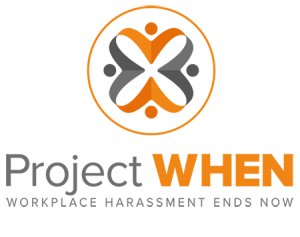Communicating for Conservation: St. Johns County, Florida’s Model for Agricultural Water Stewardship
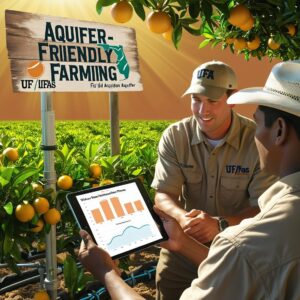 St. Johns County, Florida, undertook a bold campaign to safeguard one of the region’s most vital natural resources: the Floridan Aquifer. Spearheaded by the St. Johns River Water Management District (SJRWMD) in partnership with the University of Florida’s Institute of Food and Agricultural Sciences (UF/IFAS) Extension Office, the Aquifer-Friendly Farming Campaign sought to reduce nutrient runoff and improve irrigation practices across the county’s farmlands. The initiative emerged in response to growing concerns about water quality degradation and overuse of resources in an area marked by sandy soils prone to chemical leaching.
St. Johns County, Florida, undertook a bold campaign to safeguard one of the region’s most vital natural resources: the Floridan Aquifer. Spearheaded by the St. Johns River Water Management District (SJRWMD) in partnership with the University of Florida’s Institute of Food and Agricultural Sciences (UF/IFAS) Extension Office, the Aquifer-Friendly Farming Campaign sought to reduce nutrient runoff and improve irrigation practices across the county’s farmlands. The initiative emerged in response to growing concerns about water quality degradation and overuse of resources in an area marked by sandy soils prone to chemical leaching.
This case study explores how the campaign used collaborative strategies, incentives, and communication-centered outreach to engage the agricultural community and effect long-term change in farming practices. It also offers a replicable framework for other regions aiming to protect groundwater through sustainable agriculture.
The Initiative: Structure, Mission, and Governance
The Aquifer-Friendly Farming Campaign was structured as a county-level collaboration between SJRWMD, UF/IFAS Extension of St. Johns County, and regional agricultural stakeholders including the Florida Department of Agriculture and Consumer Services (FDACS), Suwannee River Water Management District, and Florida Farm Bureau.
Its mission was twofold:
- Protect the Floridan Aquifer by minimizing fertilizer and pesticide runoff.
- Promote water conservation through the adoption of efficient irrigation systems.
The campaign leveraged a blend of regulatory incentives and voluntary participation. SJRWMD led the financial strategy by offering cost-share programs to help farmers implement best management practices (BMPs), while UF/IFAS Extension focused on education, training, and community engagement.
Eligibility for cost-share funding was based on project alignment with BMPs—such as installing GPS-guided fertilizer systems, retrofitting irrigation networks, and developing tailwater recovery systems. Individual project support covered up to 75% of costs, capped at $250,000 annually. Simultaneously, UF/IFAS provided technical assistance and hosted community workshops to build farmer capacity in nutrient management and sustainable irrigation.
A Communication-Centered Approach to Bridging Gaps
Although science and funding were essential, the campaign’s success hinged on its ability to foster trust and understanding between agricultural producers, conservationists, and government agencies. Three major components of the communication strategy included outreach, farmer education, and public recognition.
Educational Outreach and Technical Support
The UF/IFAS Extension served as a frontline communicator, translating environmental science into practical advice for farmers. Workshops, field days, and one-on-one technical consultations were key tools. Topics ranged from soil moisture monitoring to nutrient budgeting.
These sessions were tailored to the local farming context, ensuring accessibility and relevance. Extension agents emphasized that conservation and productivity were not mutually exclusive—reinforcing the economic value of sustainable practices.
Farmer-to-Farmer Knowledge Sharing
The campaign recognized that trusted messengers often come from within the community. As such, early adopters of conservation methods were encouraged to share their results and experiences. Peer demonstration of irrigation tech and BMPs fostered word-of-mouth adoption, reinforcing best practices without a top-down mandate.
Recognition Programs to Incentivize Engagement
To highlight success stories and build a culture of sustainability, SJRWMD and partners launched recognition programs. Farmers who implemented impactful water-saving or pollution-reduction projects received awards and public acknowledgment. These honors were showcased at local events and through media campaigns, reinforcing conservation as a community norm rather than an exception.
This mix of scientific credibility, peer validation, and public visibility was critical to changing perceptions about conservation farming.
Why It Works
This section of the campaign succeeded because it made communication two-way, continuous, and locally grounded. UF/IFAS served as a trusted intermediary, while farmer-led storytelling made the campaign more relatable. Recognizing local leaders amplified positive behaviors and built social incentives for change—reaching farmers who might be resistant to regulation alone.
Modeling Participatory Governance Through Agricultural Voice
The campaign’s participatory design was rooted in the belief that farmers must be at the center of conservation planning. This meant not only receiving information but actively shaping the initiative’s implementation.
Designing Solutions with Farmers, Not for Them
Rather than imposing rigid mandates, SJRWMD and UF/IFAS co-designed solutions with producers. Site visits, collaborative planning sessions, and feedback loops allowed the agencies to understand the constraints and motivations driving farmer behavior. For example, one citrus grower’s feedback on tailwater reuse helped refine future BMP recommendations.
This collaborative ethos ensured the program was not only technically sound but practically feasible.
Addressing Diverse Needs Across Crop Types
The campaign intentionally supported a broad spectrum of farms—from cattle and hay producers to fruit and vegetable growers. Each type faced different runoff challenges and irrigation needs. By offering a flexible suite of BMPs and funding mechanisms, the initiative ensured no group was left out of the conservation conversation.
The result was a representative and inclusive approach to groundwater protection—one that balanced environmental urgency with agricultural realities.
Why It Works
Policy becomes more effective when those directly affected help shape it. This participatory approach built a sense of ownership among farmers and ensured that practices were realistic, not idealized. Diversity in engagement also meant more inclusive outcomes, better aligned with the realities of different farming operations.
Impact and Replication of the Aquifer-Friendly Farming Model
By the end of its three-year run, the campaign had made a measurable difference across several dimensions:
- Reduced Nutrient Runoff: Water monitoring showed a decline in nitrogen and phosphorus levels in the Matanzas River tributaries—an indicator that BMPs were working.
- Improved Irrigation Efficiency: Farms adopting micro-irrigation and soil sensors reported notable reductions in water usage, without sacrificing crop yield.
- Community Engagement and Collaboration: The campaign strengthened relationships between farmers, local government, and environmental groups—laying the groundwork for future conservation partnerships.
The initiative’s success is now serving as a model for replication in other counties served by the Suwannee River Water Management District. Its emphasis on voluntary incentives, community engagement, and flexible, science-based solutions has made it an adaptable blueprint for sustainable agriculture.
 Communication Lessons from the Campaign
Communication Lessons from the Campaign
The Aquifer-Friendly Farming Campaign demonstrates how strategic communication and community collaboration can make environmental protection both effective and embraced by stakeholders. Key takeaways include:
- Local messengers build trust: Farmers were more likely to embrace practices recommended by peers or Extension agents familiar with their operations.
- Visible recognition matters: Publicly celebrating conservation leaders helped elevate sustainability from a technical issue to a community value.
- Co-design enables buy-in: Farmers’ involvement in shaping the program led to more tailored, realistic BMPs—and greater adoption overall.
- Clear cost-benefit framing drives action: Emphasizing both environmental and financial benefits of BMPs increased participation in the cost-share program.
Conclusion
The Aquifer-Friendly Farming Campaign in St. Johns County offers a compelling model for how local governments and university partners can work hand-in-hand with farmers to protect groundwater. Its combination of targeted incentives, community-driven outreach, and inclusive participation ensured broad support and measurable impact.
As water quality and conservation remain critical challenges across Florida and the nation, this campaign demonstrates that sustainable agriculture is not only achievable—it thrives when rooted in communication, collaboration, and trust. The lessons from this initiative show that conservation doesn’t have to be a burden on farmers; it can be a shared responsibility and a point of pride.
Ready to Elevate Your Agency’s Public Communication?
We understand the unique challenges state and local government agencies face—from complex issues to diverse community needs. Our comprehensive approach can help you transform the way you connect with constituents, improve transparency, and highlight the valuable work your agency does every day.
Interested in learning more? Reach out to us today for a consultation. We’d love to discuss how our services can support your goals and help you build lasting trust with the communities you serve.

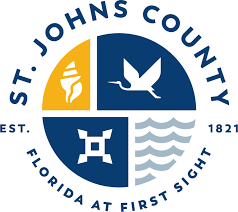
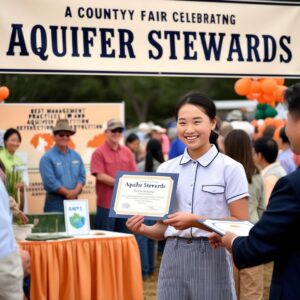
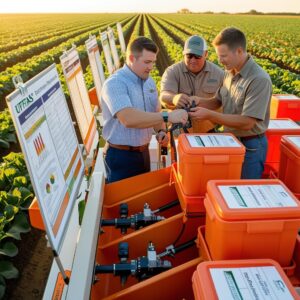 Communication Lessons from the Campaign
Communication Lessons from the Campaign

